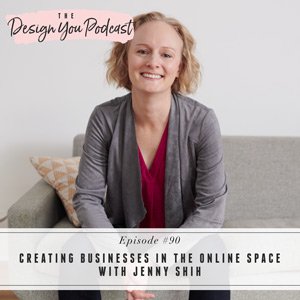
Friends, creatives, entrepreneurs, anyone who is wanting to move their business to the online space, this episode is for you. If you’ve started dipping your toe in the water of bringing your business online but you’ve been struggling, or even if it’s just something you’ve been considering, you are going to love my guest today.
Jenny Shih is an expert in building one-on-one service-based online businesses and she helps her clients figure out how to make what she has coined a “bite-sized” offer to get started. Moving into the online space is something a lot of you are starting to do, but it can be hard to figure out what steps to take first and how to deliver it. This is where Jenny steps in! She’s sharing so much of her wisdom that I know you’re going to find super useful.
Listen in this week to learn what to avoid, what to look out for, and how you can create your own no-brainer bite-sized offer to get started in the online world. Jenny has got the answers for you on this episode, so I hope you enjoy!
If you want help moving into the online world and to create a scalable product, then you want to check out Design You, my coaching program for creative entrepreneurs. Click here to learn more!





